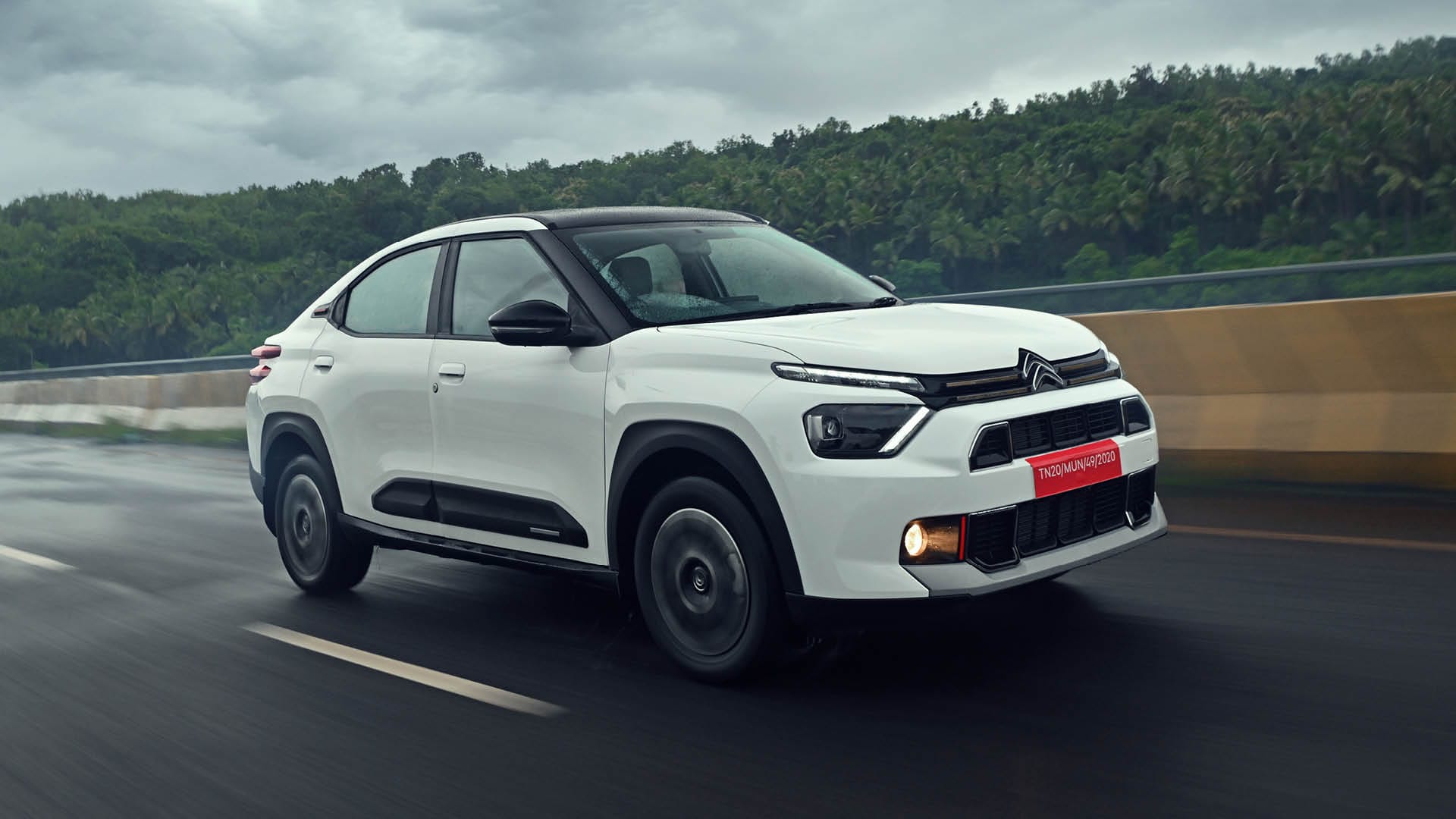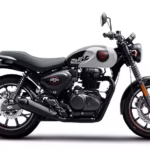India’s automobile landscape is evolving rapidly, and so are consumer preferences. Today’s buyers want the ruggedness of an SUV, the elegance of a coupe, and the practicality of a hatchback—all rolled into one. Enter the Citroën Basalt Vision 470, a coupe-SUV concept designed specifically for Indian and emerging markets. Built on the same CMP platform as the C3 and C3 Aircross, the Basalt Vision 470 is not just a showpiece—it’s a symbol of Citroën’s intent to challenge the status quo in India’s mid-size SUV segment.
Let’s deep dive into what makes the Citroën Basalt 470 a potential game-changer.
Design: French Flair with Coupe DNA
Citroën is known for its bold, avant-garde design language, and the Basalt 470 carries that legacy forward. The first thing that grabs attention is its sloping coupe roofline, a rarity in this segment. It seamlessly blends SUV muscle with coupe grace, creating a profile that is both sporty and elegant.
The front fascia is inspired by Citroën’s latest design philosophy—featuring split LED headlamps, a sleek gloss-black grille with integrated chevrons, and an aggressive bumper with faux air dams. The high-set bonnet and strong wheel arches give it a rugged SUV stance.
From the side, the pronounced character lines, dual-tone alloys, blacked-out B-pillar, and roof rails accentuate its athleticism. At the rear, the tapering windshield, wrap-around LED tail lamps, and chunky bumper add to the coupe SUV aesthetic, reminding us of premium models like the BMW X4—but at a fraction of the cost.
Expected Dimensions:
- Length: Approx. 4,300 mm
- Width: Approx. 1,790 mm
- Height: Approx. 1,600 mm
- Wheelbase: 2,540 mm
These figures place it between the Hyundai Creta and the Kia Seltos, offering urban-friendly proportions without compromising cabin space.
Interior: Practicality Meets Premium Styling
While the concept’s cabin hasn’t been fully revealed, expectations are high based on Citroën’s current line-up and teasers. The dashboard is likely to feature a minimalistic, tech-forward layout with a layered design. Soft-touch materials, dual-tone themes, and brushed aluminum accents are expected to elevate the premium feel.
The central infotainment system is expected to be a 10.25-inch floating touchscreen with wireless Apple CarPlay and Android Auto. Digital instrument cluster, automatic climate control, a 6-speaker Arkamys sound system, rear AC vents, and Type-C charging ports will likely round out the equipment list.
Despite the coupe silhouette, Citroën claims rear headroom and legroom will remain generous. The rear seat will offer a 3-point seatbelt for all passengers, armrest, and 60:40 split-folding capability.
Engine & Performance
The Citroën Basalt 470 will most likely be powered by the 1.2L turbo-petrol PureTech engine, already seen in the C3 and C3 Aircross. Known for its peppy character and refinement, this engine is expected to be tuned for better mid-range performance in the Basalt.
Expected Engine Specs:
- Engine: 1.2L 3-cylinder Turbocharged Petrol
- Power: 110 PS
- Torque: 190 Nm
- Transmission: 6-speed manual & 6-speed torque converter automatic (AT)
This setup should offer a fine balance between urban driveability and highway cruising. While a diesel variant is unlikely due to Citroën’s global push for cleaner fuel, an EV version on the same platform may follow in the future.
Mileage (Estimated):
- Manual: 18–19 km/l
- Automatic: 16–17 km/l
Ride Quality & Handling
Citroën has a reputation for offering class-leading ride comfort, and the Basalt 470 is expected to carry that torch. Based on the same CMP modular platform, it is likely to get a MacPherson strut front and torsion beam rear suspension setup.
With softer damping and a suspension tuned for Indian roads, the Basalt will likely handle speed breakers, potholes, and broken roads with ease. The slightly higher ground clearance (~200 mm) will give it mild off-road ability without compromising comfort on city roads.
The steering feel is expected to be light and city-friendly, while offering decent feedback at highway speeds.
Safety Features
Safety will be a strong focus for Citroën with this model. Though official specs are pending, the following features are expected:
- Dual front airbags (with side & curtain airbags in higher variants)
- ABS with EBD
- Rear parking sensors with camera
- Electronic Stability Control (ESC)
- Hill-Hold Assist
- ISOFIX child seat mounts
- High-speed alert system
- 3-point seat belts for all occupants
We expect Citroën to aim for a 4-star or higher Global NCAP rating, given the growing awareness among Indian buyers around crash safety.
Features & Variants (Expected)
Citroën typically offers a no-frills base variant and gradually increases features through higher trims. The Basalt 470 will likely follow this formula:
Base Trim:
- Power steering & power windows
- Manual AC
- Halogen headlamps
- Dual airbags
- Basic MID
Mid Variant:
- Touchscreen infotainment
- Rear camera
- Alloy wheels
- Rear wiper/washer
- Fog lamps
Top Trim:
- Full LED lighting
- Connected car features
- Push-button start
- Keyless entry
- Cruise control
- Wireless charger
- Digital instrument cluster
Color Options (Expected)
Citroën may offer the Basalt in exciting, youthful shades, including:
- Eclipse Blue
- Volcano Red
- Arctic White
- Platinum Grey
- Dual-tone options with contrast roof (black or white)
Launch Timeline & Expected Price
Citroën has confirmed a 2024 launch, possibly around festive season (October–November). It will be locally manufactured, ensuring competitive pricing.
Expected Ex-showroom Price (INR):
- Base Variant: ₹8.50 lakh
- Top-end AT: ₹12.50 lakh
This would place the Basalt 470 squarely against rivals like the Hyundai Creta, Kia Seltos, Maruti Grand Vitara, Toyota Hyryder, and the Skoda Kushaq.
Market Positioning & Rivals
The Basalt 470 is unique in its design philosophy. While most competitors are conventional SUVs, the Basalt’s coupe-SUV styling gives it a niche positioning—appealing to younger buyers who value style as much as substance.
Its direct competitors include:
- Tata Curvv (upcoming coupe SUV)
- Hyundai Creta
- Kia Seltos
- Maruti Grand Vitara
- Skoda Kushaq
- VW Taigun
The coupe silhouette, premium interiors, and comfort-oriented setup give it an edge in urban and lifestyle markets.
Pros & Cons
Pros:
- Eye-catching coupe-SUV design
- Proven 1.2L turbo engine
- Excellent ride quality
- Feature-loaded top variants
- Competitive pricing expected
Cons:
- No diesel engine option
- No AWD variant
- Limited service network (currently expanding)
Conclusion
The Citroën Basalt Vision 470 isn’t just a concept—it’s a promise. A promise that Indian buyers no longer need to compromise between style, practicality, and affordability. With its coupe-inspired design, refined powertrain, and French flair, the Basalt 470 could become the most stylish SUV in the under-₹15 lakh bracket.
It may not be a volume blockbuster like the Creta, but for those who want to stand out and ride in comfort, the Basalt is a very compelling option to wait for.
FAQs
Q1: Is the Citroën Basalt 470 based on the C3 Aircross?
Yes, it shares the CMP modular platform with the C3 and C3 Aircross but has unique styling and bodywork.
Q2: Will the Basalt 470 offer an EV version?
While not confirmed, Citroën is likely to introduce an electric version based on market demand and platform flexibility.
Q3: Is the Basalt suitable for off-roading?
It’s more of a soft-roader with decent ground clearance, ideal for rough roads but not hardcore off-roading.
Q4: How is Citroën’s after-sales service in India?
Still growing, but the brand is expanding its dealership and service footprint aggressively across urban centers.










